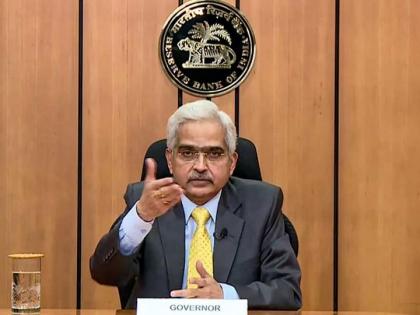RBI Monetary Policy Meeting: Governor Shaktikanta Das Keeps Repo Rate Unchanged At 6.5% (Watch Video)
By Lokmat English Desk | Updated: December 6, 2024 10:28 IST2024-12-06T10:27:01+5:302024-12-06T10:28:26+5:30
The Reserve Bank of India’s (RBI) announced its fifth bi-monthly monetary policy of FY25, today, December 6. The six-member ...

RBI Monetary Policy Meeting: Governor Shaktikanta Das Keeps Repo Rate Unchanged At 6.5% (Watch Video)
The Reserve Bank of India’s (RBI) announced its fifth bi-monthly monetary policy of FY25, today, December 6. The six-member Monetary Policy Committee (MPC) led by RBI Governor Shaktikanta Das decided to keep the benchmark repo rate unchanged at 6.5% for the eleventh straight meeting, and maintain the monetary policy stance ‘Neutral’.In recent weeks, several key figures, such as Chief Economic Adviser V Anantha Nageswaran, Commerce Minister Piyush Goyal, and Finance Minister Nirmala Sitharaman, have highlighted the importance of reducing borrowing costs.
#WATCH | Mumbai | RBI Governor Shaktikanta Das says, "The Monetary Policy Committee decided by a majority of 4:2 to keep the policy repo rate unchanged at 6.5%..."
— ANI (@ANI) December 6, 2024
(Source: RBI) pic.twitter.com/oteBt4FLlQ
What is Repo Rate?
Repo rate, also known as repurchase agreement or repurchasing option, refers to the interest rate at which commercial banks borrow money from the central bank, pledging government securities as collateral. The term "repo" is derived from "repurchase agreement," reflecting the contractual nature of the transaction. The process involves a short-term loan where the borrower (usually a commercial bank) sells securities to the lender (the central bank) with an agreement to repurchase them at a specified future date, often the next day, at a slightly higher price. In this case, “repo rate” is the interest rate at which the Reserve Bank of India loans money to the commercial banks in India.
Why is Repo Rate important?
The repo rate is a critical tool used by central banks to manage the economy and maintain financial stability. It's the interest rate at which banks borrow funds from the central bank, acting as a benchmark for other interest rates throughout the economy. Now that we have understood the meaning of repo rate and how it works, let us take a look at its importance:
Controlling Inflation :
By adjusting the repo rate, central banks can influence the cost of credit and aggregate demand. Higher repo rates discourage borrowing and spending, which helps to control inflation. Conversely, lower repo rates stimulate borrowing and spending, potentially leading to higher inflation.
Promoting Economic Growth :
When the economy slows down, central banks can lower the repo rate to make borrowing cheaper and encourage investment and spending. This can help to stimulate economic growth.
Maintaining Financial Stability :
A high repo rate can discourage excessive risk-taking by banks and other financial institutions, contributing to financial stability.